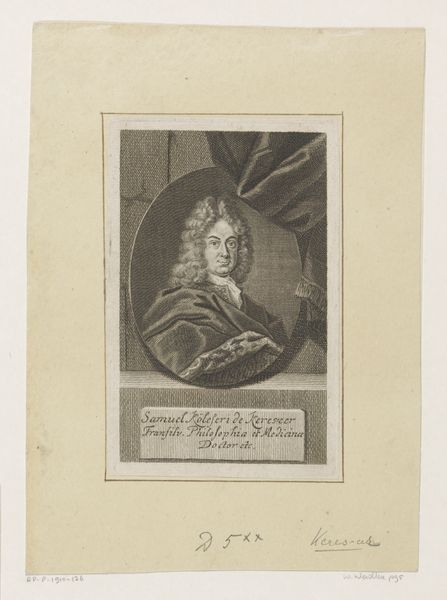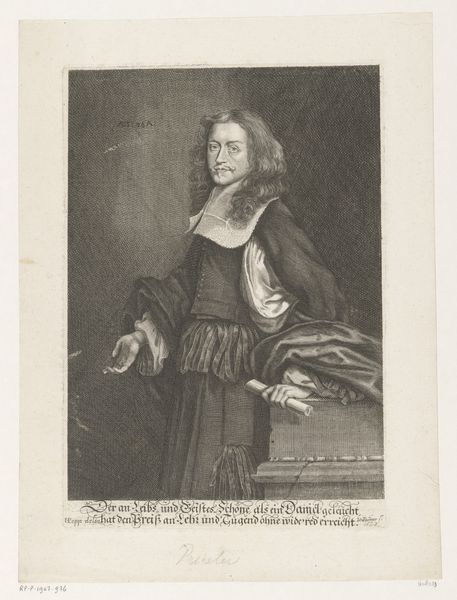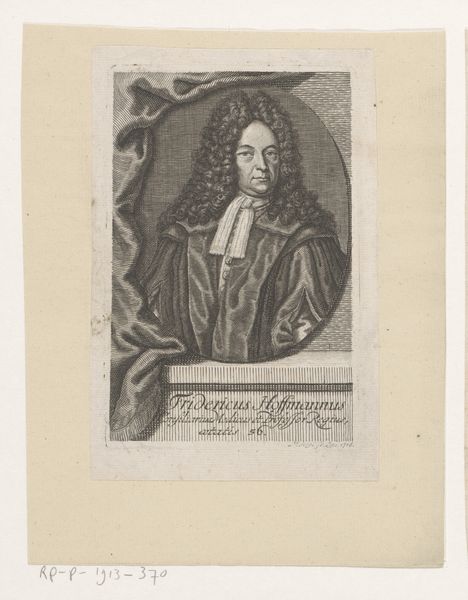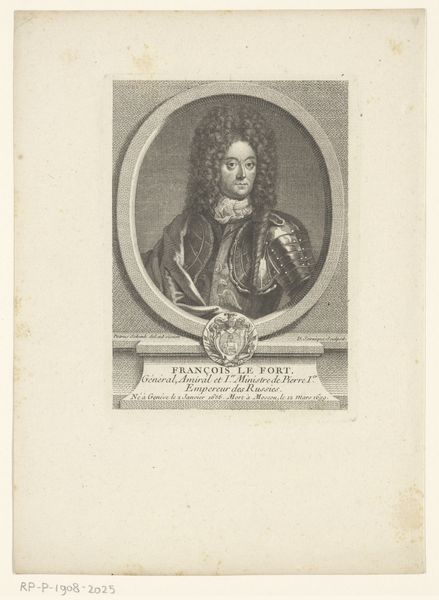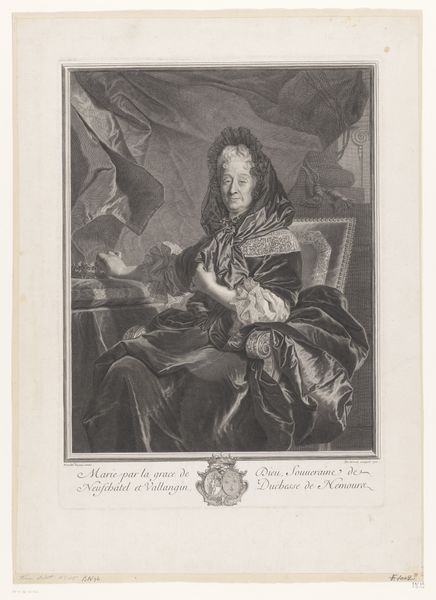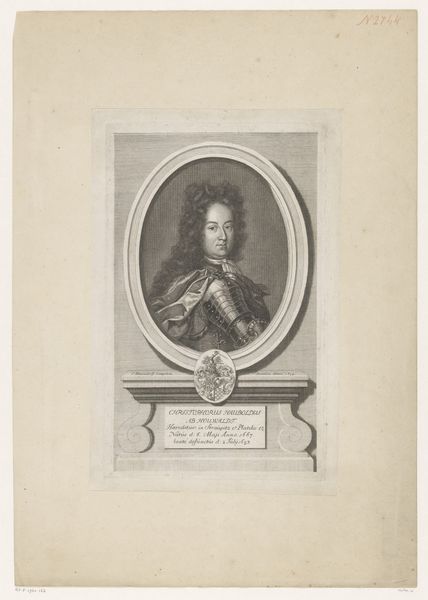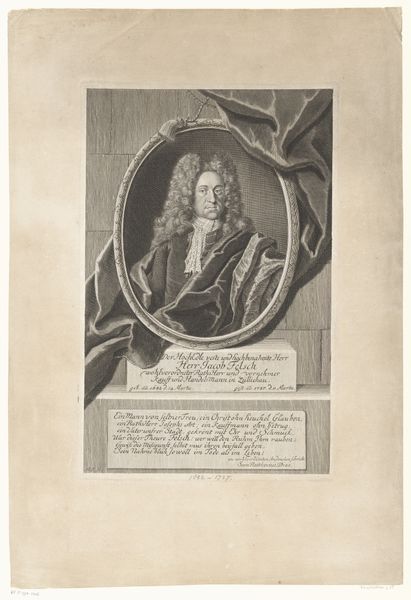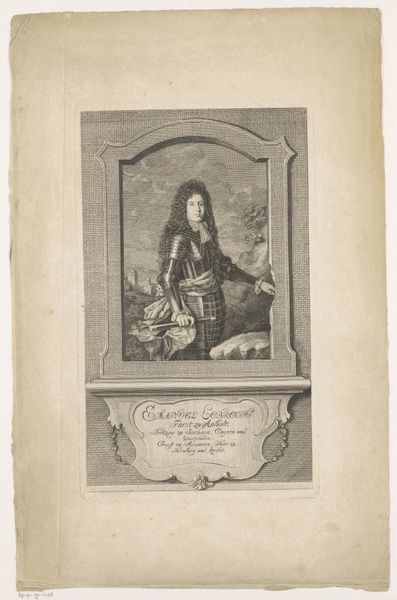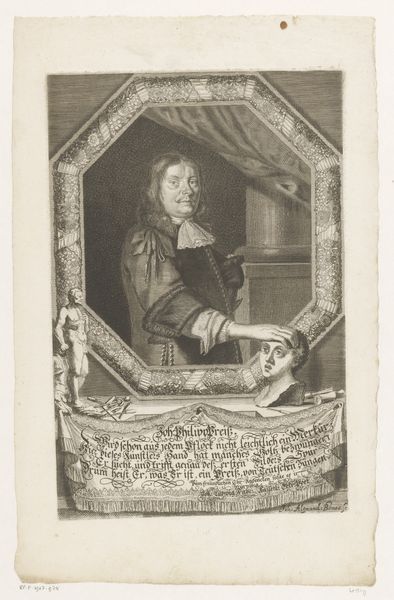
Dimensions: height 351 mm, width 288 mm
Copyright: Rijks Museum: Open Domain
Editor: Here we have a piece entitled "Portrait of Caspar Netscher," an engraving created after 1761 by Antoine François Hémery. It's fascinating how the texture almost mimics a woven fabric, even though it's a print. What's your take on this, looking at the materiality? Curator: I find the engraving medium itself significant. Prints democratized art. How does the use of engraving, a process requiring skill and labor-intensive steps, contribute to its message? Editor: That’s a great point. It’s no longer a unique painting. What implications does it have that anyone could own the portrait of Netscher? Curator: It invites us to examine the means of production, the socio-economic structures in play, and the rise of a consumer culture around art. Consider the lines etched into the plate – they were incised laboriously by hand. We need to think about how that physical process translates into value and meaning, for both the producer and the consumer of the print. What’s also telling is that this is "after" a painting; it's a copy of something perceived to be more precious. Editor: So, the act of reproducing and distributing portraits wasn't just about access but about changing the meaning and value of the image itself? Curator: Exactly. The choice of materials, the printmaking process itself, and its dissemination reflect evolving attitudes towards art, labor, and the market. Think about the conditions in which Hemery produced it. Who was his patron? What was the purpose of mass producing the image? Editor: This perspective shifts the focus from just the "artistic genius" to the broader network that brings a work into being. Curator: Precisely! And by considering these aspects, we gain a deeper understanding of its significance.
Comments
No comments
Be the first to comment and join the conversation on the ultimate creative platform.

